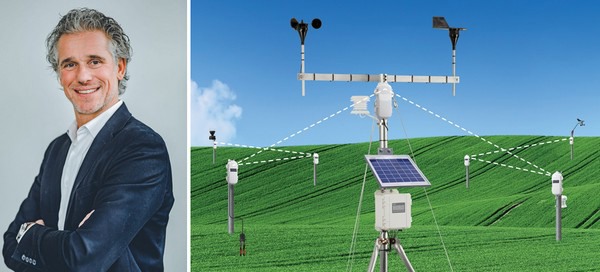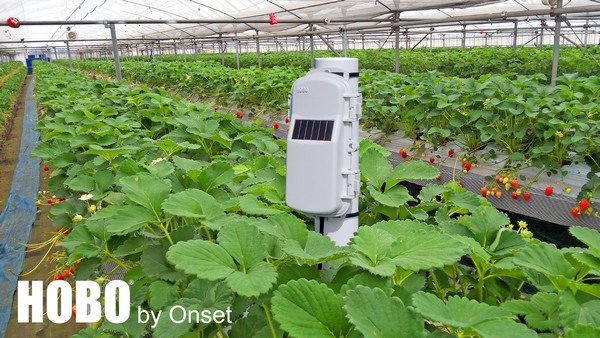With the advance of sensors in cultivation, growers are using them more and more. Pedak Meettechniek helps them with this. Not by making sensors themselves, but by ensuring that a complete package of sensors ultimately provides data that is received at one central point. "And comes in in the right way, because that is the crux of the matter," explains Roland Vossen, director of the Heythuysen-based expert in measuring, monitoring and displaying data.

Ronald Vossen next to a schematic example of a sensor network
A full circle
In 1975, Pedak started measuring in the food industry, at production companies. The focus at the time was on equipment for measuring quality and shelf life. Over time, the demand for climate measurement developed, not only in food companies but also in operating theatres, for example.
And as companies began to measure climate parameters such as temperature, humidity and differential pressure, the need arose to be able to compare and learn from data history. The result is that today Pedak also offers monitoring systems and data loggers. This brings us full circle. And that also applies to the sustainability measuring equipment with which it all began. "Today, this is again widely used by seed breeding companies", Roland states. "Specialist companies like these want to be able to measure moisture in seeds and pollen, for example, in order to determine quality and shelf life on that basis."
Broadly applicable package
Roland counts about fifty parameters that can be measured in the agricultural sector. Together with sensor suppliers, Pedak offers a complete package that can be used across the board. Roland has noticed, for example, that there is a need in the vertical farming sector to be able to measure air humidity very accurately. On the other hand, a new measuring system is being introduced for outdoor crops. The new system makes it possible to measure the temperature and the moisture content in the soil at various depths simultaneously. "This will enable growers to irrigate better and anticipate more quickly."
Pedak deliberately does not develop the sensors himself. "That would limit us. We use the development capacity of several manufacturers and then look with the customer at what best suits their specific situation. Sometimes this can require combining the products of multiple manufacturers to get the right package."

One central collection point
Ultimately, it helps users if all the data comes in at one central point. Roland sees that many growers use temperature sensors. Data from these often already enters a system, but as soon as other sensors are also used for other processes, Pedak helps by, for example, adding a module that reads data and forwards it to one central point. Meanwhile, wireless measurement is also becoming more common.
But not everything needs to be wireless. "When wireless started to gain popularity fifteen years ago, many parties started to offer wireless do-it-yourself packages. The result was that, especially in the beginning, installations did not function optimally. We, too, gained knowledge and experience by trial and error. We now know that with the right placement at the right location, large distances can be bridged and you can install a good and stable sensor network with it."
Reliability without huge speed
According to Roland, this makes it interesting for users to read out all the data from multiple sources with one software package, even in one large greenhouse. Linking locations or greenhouses is also possible. Sometimes by using multiple SIM cards, the costs of which are constantly being reduced. Or by making extra support points, sometimes wired, sometimes not.
Currently, 2G, 3G and 4G SIM cards are in use. And 5G is also coming. Roland follows the developments, but indicates that 5G is not necessary to transfer data well and reliably. "Even with 2G you can transfer data perfectly. The reliability is not in the speed. The quality of the sensor-receiver connection is particularly important. Where the distances become greater or there are (natural) barriers, it is up to us to ensure that it works. And we don't use do-it-yourself packages for that. Our strength lies in proper installation. When we are gone, the user must have the guarantee that it works and will continue to work."
For more information:
Roland Vossen
Pedak Meettechniek
info@pedak.nl
www.pedak.nl
